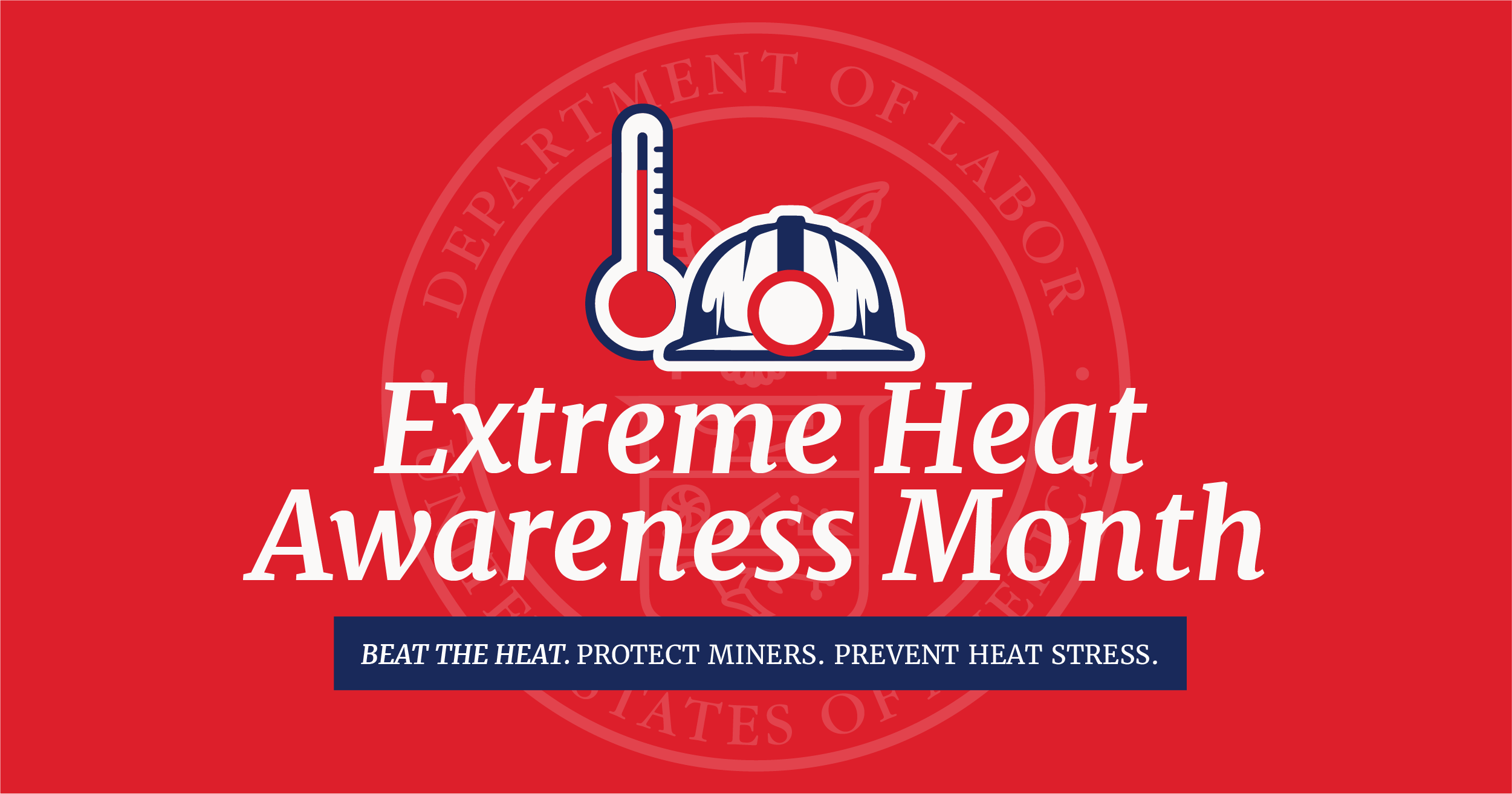
Why Heat Safety Matters
As summer temperatures rise, so do the risks to miners working in hot environments. Extreme Heat Awareness Month, observed each July, underscores the importance of recognizing and preventing heat stress in surface, underground, and indoor mining operations.
A “hot” work site is any environment where the combination of air temperature, humidity, solar radiation, and air movement results in a Wet Bulb Globe Temperature (WBGT) above 79°F. Such conditions are common in:
- Outdoor sites during excavation, construction, and blasting
- Indoor facilities with furnaces, smelters, kilns, or compressors
- Deep underground mines, where heat radiates from rock and hot groundwater
- Enclosed work areas where machinery and physical labor add to the heat load
Without proper precautions, heat exposure can cause reduced concentration, slower reaction times, and unsafe decision-making—ultimately increasing the risk of injuries and fatalities.
Recognizing and Preventing Heat Stress
Each year, MSHA amplifies efforts to educate the mining community on the dangers of heat exposure and the importance of proactive safety measures.
MSHA reminds all stakeholders:
- Heat stress can lead to heat-related illness symptoms such as heat rash, cramps, fatigue, dehydration, heat exhaustion, or life-threatening heat stroke.
- Workers over the age of 60, those with certain medical conditions, and those taking medications affecting sweat or hydration are at higher risk.
- All miners must understand the warning signs of heat-related illness, know how to respond quickly, and be empowered to protect themselves and their coworkers.
MSHA and our partners continue to emphasize updated guidance, training resources, and protective strategies to prevent heat-related incidents across all mining environments.
Key Heat Safety Practices
Follow these best practices to prevent heat stress.
Engineering Controls
- Improve ventilation and airflow in hot work zones
- Use air conditioning and shielding to reduce radiant heat
- Design mines and tasks to minimize worker heat exposure
- Transfer hot groundwater using insulated piping
- Provide cool rest areas near worksites
Work Practices
- Acclimate miners to heat gradually over 5–6 days
- Provide regular water and rest breaks
- Schedule heavy labor during cooler times of day
- Rotate workers on hot tasks and avoid working alone
- Avoid caffeine, alcohol, and excess sugar
Personal Protective Equipment and Cooling Gear
- Wear breathable clothing that promotes evaporation
- Use reflective clothing and ice vests when needed
- Consider wetted garments or circulating air suits for high-heat tasks
- Encourage sunblock use and loose-fitting protective clothing outdoors
Know the Symptoms
- Heat Rash: Red blisters, usually in skin folds
- Heat Cramps: Painful muscle spasms
- Heat Exhaustion: Headache, dizziness, heavy sweating, nausea
- Heat Stroke: Confusion, dry skin, unconsciousness — medical emergency
Lockout/tagout
- Lockout/tagout disables machinery and equipment to prevent the release of hazardous energy while workers perform maintenance.
- Only certified electricians should perform high-voltage or complex electrical work.
- Use engineering controls like machine guarding, task-specific training, and appropriate PPE.
